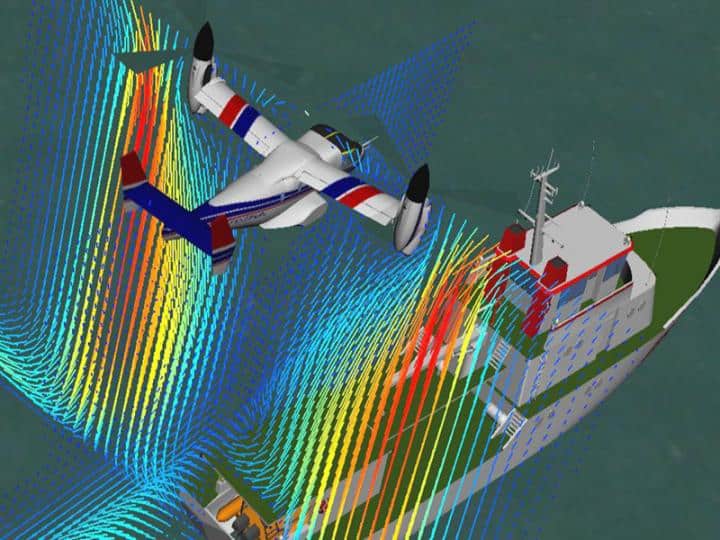
One of the most important applications for helicopters is search and rescue missions at sea, in the mountains and in cities. However, these are also among the most difficult places to fly, because the landscape, tall buildings and offshore installations like oil rigs add to unpredictable and severe changes in wind speed and direction, and such turbulence can throw helicopters off balance and lead to crashes. Helicopter specialists at the Technical University of Munich (TUM) are now working to improve flight simulators so that they can help pilots prepare for such conditions.
Current helicopter simulators follow a rigid pattern when simulating air movement, explains Juergen Rauleder, TUM's Chair of Helicopter Technology: "That means that local variations and changing conditions are not taken into account – unless the entire airflow environment is known in advance." But it is precisely these changing conditions that cause problems; for example, a moving ship will create turbulence in its wake, with the unpredictability increased by wave conditions and the way the downdraught from helicopter rotors interacts with the deck and superstructure. Similar interactions, for example with mountain slopes and the walls of skyscrapers, cause problems in cities and mountain regions. "Until now flight simulators have not adequately reflected the reality of flying close proximity to large objects," Rauleder said.
This means that the only way the pilots to train for these conditions is to experience them for themselves. This is hazardous and stressful, both for trainees and for aircraft. "Because the first attempts usually result in rather hard landings, the dampers and landing gear take quite a beating," Rauleder explained.
The Munich team has developed a simulator that combines flow mechanics and flight dynamics in real-time. In a presentation at the Deutscher Luft- und Raumfahrtkongress late last year, they described how the system needs only the helicopter type, topography and global windspeed to continuously calculate the interacting flow field of air currents at the helicopter’s current location, letting the pilot feel the impact of local airflows on the aircraft, and try manoeuvres in a stress-free environment. The simulator has now been verified with established reference models, and is now working with the US Naval Academy, George Washington University and University of Maryland to verify the simulation against reality, using in-flight data collected by the German Aerospace Centre and measurements of airflow on and around ships, collected by the experts in Washington DC.
"The validation of the models and testing of our simulation environment by experienced pilots in our research simulator is enormously important for our developments,” said Rauleder. “That's the only way we can ensure that the simulator training provides student pilots with optimal preparation for tough missions.”




Nanogenerator consumes CO2 to generate electricity
Whoopee, they've solved how to keep a light on but not a lot else.